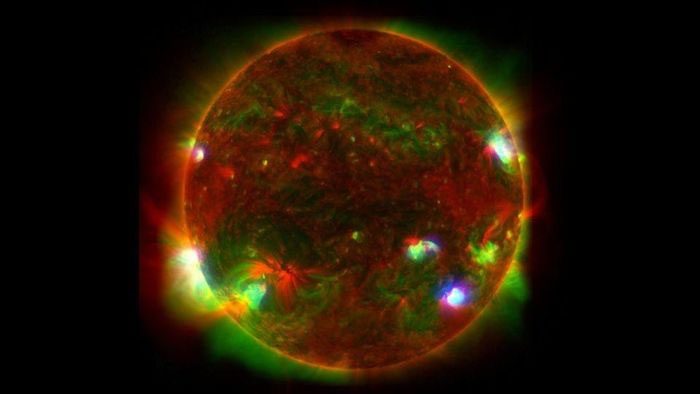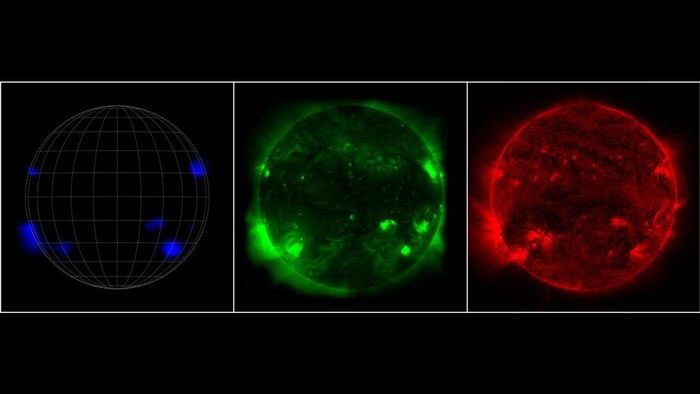A trio of telescopes has captured a new perspective of the Sun, recording light that is invisible to the naked eye.

The overlapping wavelengths of light from three space observatories create a unique new image of the Sun. (Image: JPL-Caltech/JAXA/NASA).
The newly released image combines X-ray points emitted from the Sun, observed by the Nuclear Spectroscopic Telescope Array (NuSTAR, represented in blue), with data from Japan’s Hinode X-ray Telescope (shown in green) and the Atmospheric Imaging Assembly on NASA’s Solar Dynamics Observatory (shown in red), CNN reported on February 16.
The Nuclear Spectroscopic Telescope Array, or NuSTAR, can observe the X-rays emitted from the hottest regions of the Sun’s atmosphere.
Meanwhile, the Hinode X-ray Telescope has the capability to detect low-energy X-rays. The Solar Dynamics Observatory can capture extremely powerful ultraviolet light.
In addition to the types of light visible to the human eye, there are still many wavelengths of light that are obscured from our view, including X-rays and ultraviolet light.
From its orbit around Earth, NuSTAR captured 25 high-energy X-ray images of the Sun’s atmosphere in June 2022.

While NuSTAR observed high-energy X-rays from the Sun (depicted in blue), Hinode detected low-energy X-rays (green), and the Solar Dynamics Observatory captured images of ultraviolet light (red). (Image: JPL-Caltech/JAXA/NASA).
Launched into space in June 2012, NuSTAR’s mission is to observe massive black holes and dying stars outside our solar system, but it also provides unique images of the Sun.
One of the biggest mysteries about the Sun is why its outer atmosphere – known as the corona – is at least 100 times hotter than the surface of this celestial body.
Astronomers believe that the heat of the corona may reach an astonishing one million degrees Celsius, potentially due to small explosions known as nanoflares.
It is very difficult to detect nanoflares because the brightness of the Sun is overwhelming, but NuSTAR can identify high-energy material generated from closely occurring nanoflares. NuSTAR’s data may help scientists track the frequency of nanoflare occurrences to better understand the Sun’s activity cycle.





















































